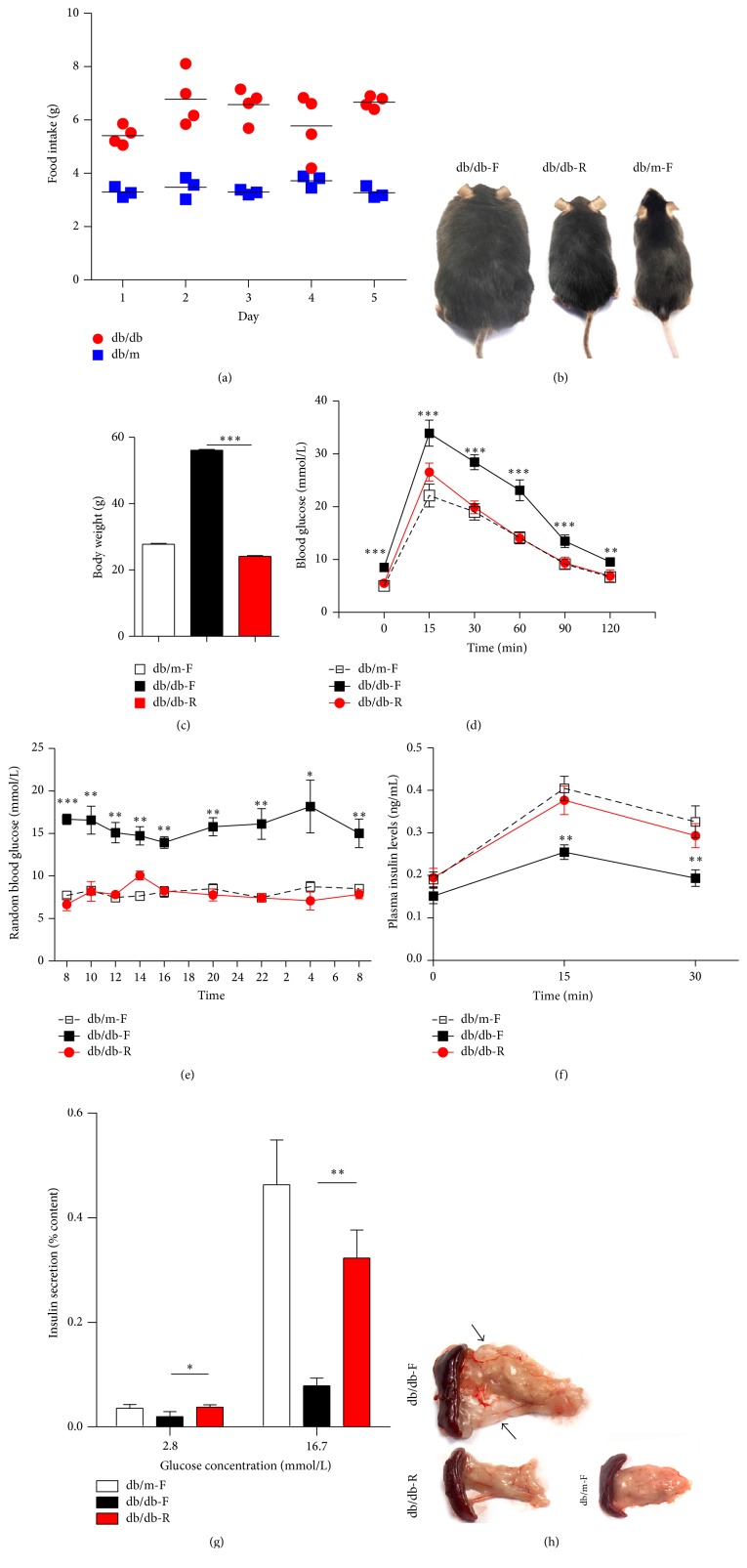Figure 1.
Improvement of β-cell function after long-term caloric restriction (CR). (a) Continuous food intake monitoring showed that increased food intake was observed in db/db mice compared with db/m mice at 3 months of age. (b-c) db/db-R mice were healthy and their weights were significantly low compared with db/db-F mice. (d) Intraperitoneal glucose tolerance test (IPGTT) was performed and blood glucose was measured at 0, 15, 30, 60, 90, and 120 min in the db/m-F, db/db-F, and db/db-R mice. (e) Twenty-four-hour dynamic blood glucose monitoring was performed on db/m-F, db/db-F, and db/db-R mice. (f) Plasma insulin levels were measured at 0, 15, and 30 min after IPGTT in db/m-F, db/db-F, and db/db-R mice. (g) Insulin secretion from islet cells isolated from db/m-F, db/db-F, and db/db-R mice was measured after the glucose-stimulated insulin secretion (GSIS) test. (h) The adipose tissue around the pancreas was examined in db/m-F, db/db-F, and db/db-R mice. The arrows indicate the adipose tissue. ∗ P < 0.05, ∗∗ P < 0.01, and ∗∗∗ P < 0.001. The data shown represent three independent experiments. db/db-F and db/db mice given free access to regular chow; db/db-R and db/db mice receiving restricted food supply; db/m-F and db/m mice given free access to regular chow.

